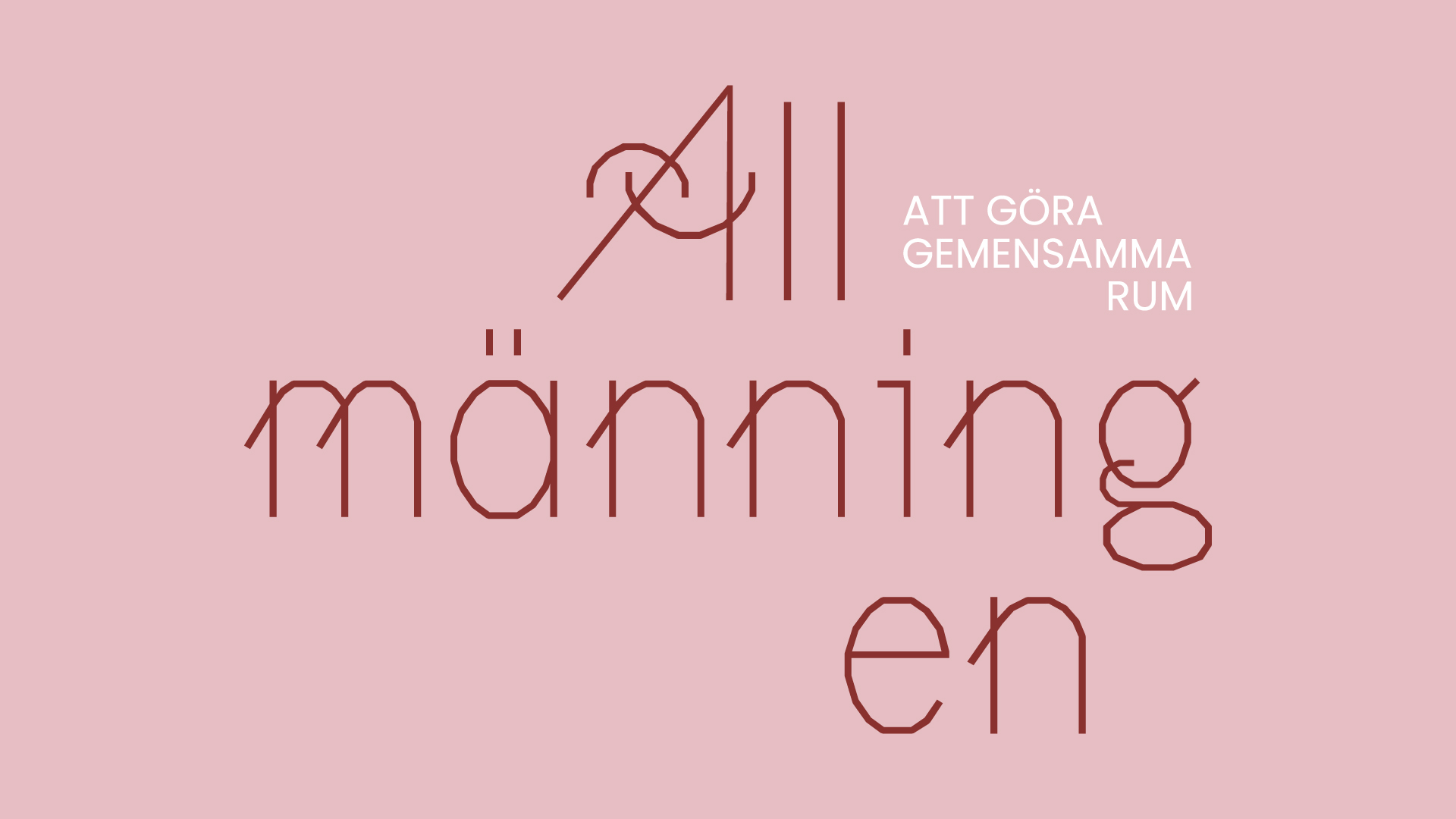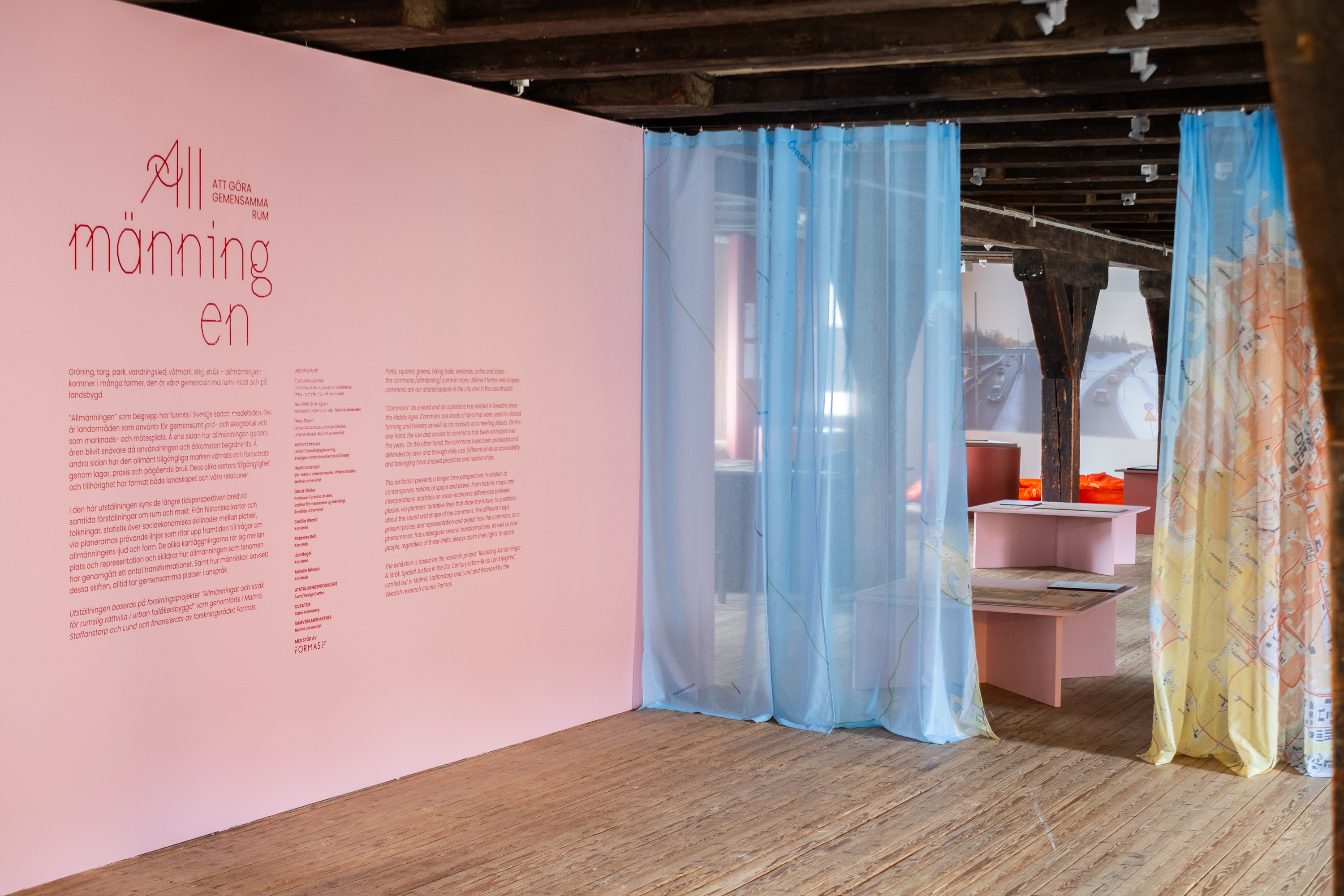Allmänningen - att göra gemensamma rum
Parks, squares, greens, wetlands, hiking trails, bridleways, paths and lanes - the commons [allmänning] come in various shapes and forms; commons are our shared spaces in the city and in the countryside.
.
The ”commons" as concept and practice has been present in Sweden since the Middle Ages. Historically, the commons were areas of land that were used for shared farming and forestry as well as for markets and meeting places. On the one hand, the use and access to commons has been restricted over the years. On the other hand, the commons have been protected and defended by laws and through everyday use. Thus, different kinds of accessibility and belonging have shaped common practices and relationships.
.
This exhibition puts long-time perspectives of land use in conversation with contemporary notions of space and power. From historical maps and interpretations, statistics on socio-economic differences between places, via urban planners’ tentative sketches of the future, to questions about the sounds and shapes of the commons. These different forms of mapping oscillate between questions of place and representation, and depict how the commons, as a phenomenon, has undergone numerous transformations throughout the years. What is more, they show how people, regardless of these changes, have always claimed their right to space.
.
The exhibition is based on the research project "Revisiting Allmänningar & Stråk. Spatial Justice in the 21st Century Urban-Rural Land Regime", carried out in Malmö, Staffanstorp and Lund and financed by the Swedish research council Formas.
.



Allmänningen - att göra gemensamma rum
Parks, squares, greens, wetlands, hiking trails, bridleways, paths and lanes - the commons [allmänning] come in various shapes and forms; commons are our shared spaces in the city and in the countryside.
.
The ”commons" as concept and practice has been present in Sweden since the Middle Ages. Historically, the commons were areas of land that were used for shared farming and forestry as well as for markets and meeting places. On the one hand, the use and access to commons has been restricted over the years. On the other hand, the commons have been protected and defended by laws and through everyday use. Thus, different kinds of accessibility and belonging have shaped common practices and relationships.
.
This exhibition puts long-time perspectives of land use in conversation with contemporary notions of space and power. From historical maps and interpretations, statistics on socio-economic differences between places, via urban planners’ tentative sketches of the future, to questions about the sounds and shapes of the commons. These different forms of mapping oscillate between questions of place and representation, and depict how the commons, as a phenomenon, has undergone numerous transformations throughout the years. What is more, they show how people, regardless of these changes, have always claimed their right to space.
.
The exhibition is based on the research project "Revisiting Allmänningar & Stråk. Spatial Justice in the 21st Century Urban-Rural Land Regime", carried out in Malmö, Staffanstorp and Lund and financed by the Swedish research council Formas.
.